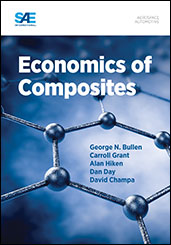Journal Article
Body Join Drilling for One-Up-Assembly
2013-09-17
2013-01-2296
Over 1,200 large diameter holes must be drilled into the side-of-body join on a Boeing commercial aircraft's fuselage. The material stack-ups are multiple layers of primarily titanium and CFRP. Due to assembly constraints, the holes must be drilled for one-up-assembly (no disassembly for deburr). In order to improve productivity, reduce manual drilling processes and improve first-time hole quality, Boeing set out to automate the drilling process in their Side-of-Body join cell. Implementing an automated solution into existing assembly lines was complicated by the location of the target area, which is over 15 feet (4 meters) above the factory floor. The Side-of-Body Drilling machines (Figure 1) are capable of locating, drilling, measuring and fastening holes with less than 14 seconds devoted to non-drilling operations. Drilling capabilities provided for holes up to ¾″ in diameter through stacks over 4.5″ thick in a titanium/CFRP environment.

